Mariá C. V. Nascimento
Community-based anomaly detection using spectral graph filtering
Jan 24, 2022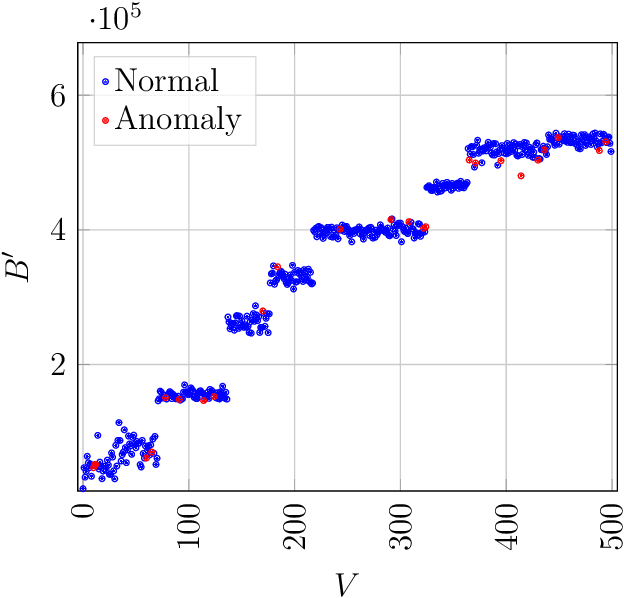
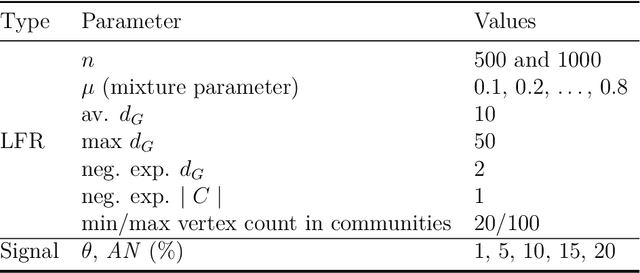
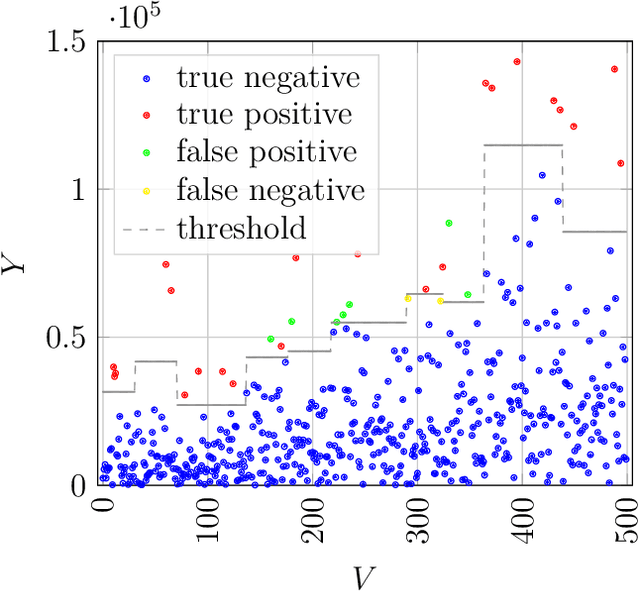
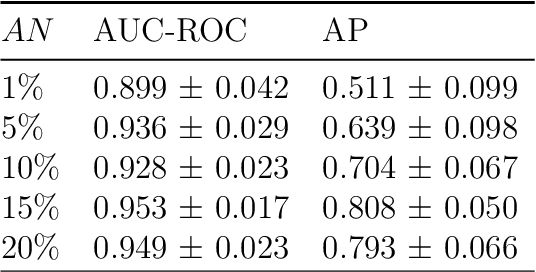
Abstract:Several applications have a community structure where the nodes of the same community share similar attributes. Anomaly or outlier detection in networks is a relevant and widely studied research topic with applications in various domains. Despite a significant amount of anomaly detection frameworks, there is a dearth on the literature of methods that consider both attributed graphs and the community structure of the networks. This paper proposes a community-based anomaly detection algorithm using a spectral graph-based filter that includes the network community structure into the Laplacian matrix adopted as the basis for the Fourier transform. In addition, the choice of the cutoff frequency of the filter considers the number of communities found. In computational experiments, the proposed strategy, called SpecF, showed an outstanding performance in successfully identifying even discrete anomalies. SpecF is better than a baseline disregarding the community structure, especially for networks with a higher community overlapping. Additionally, we present a case study to validate the proposed method to study the dissemination of COVID-19 in the different districts of S\~ao Jos\'e dos Campos, Brazil.
Meteorological and human mobility data on predicting COVID-19 cases by a novel hybrid decomposition method with anomaly detection analysis: a case study in the capitals of Brazil
May 10, 2021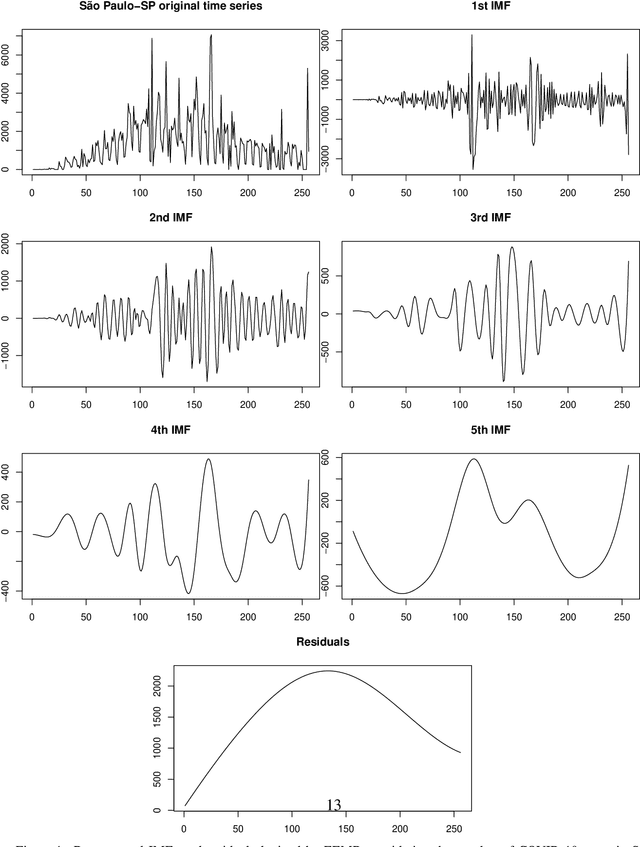
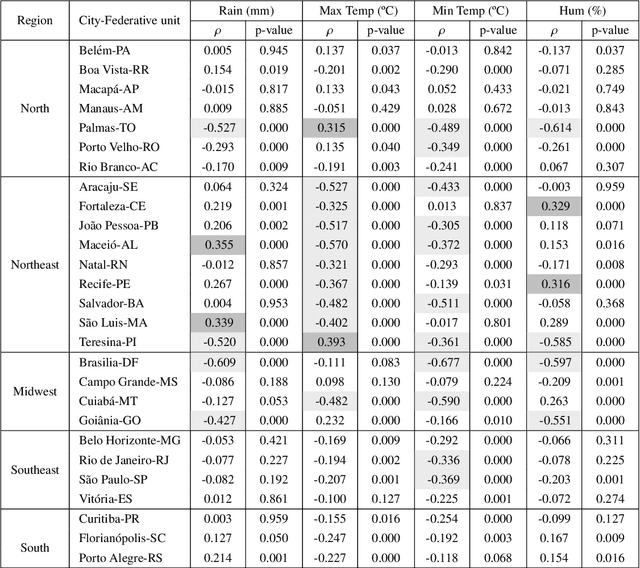
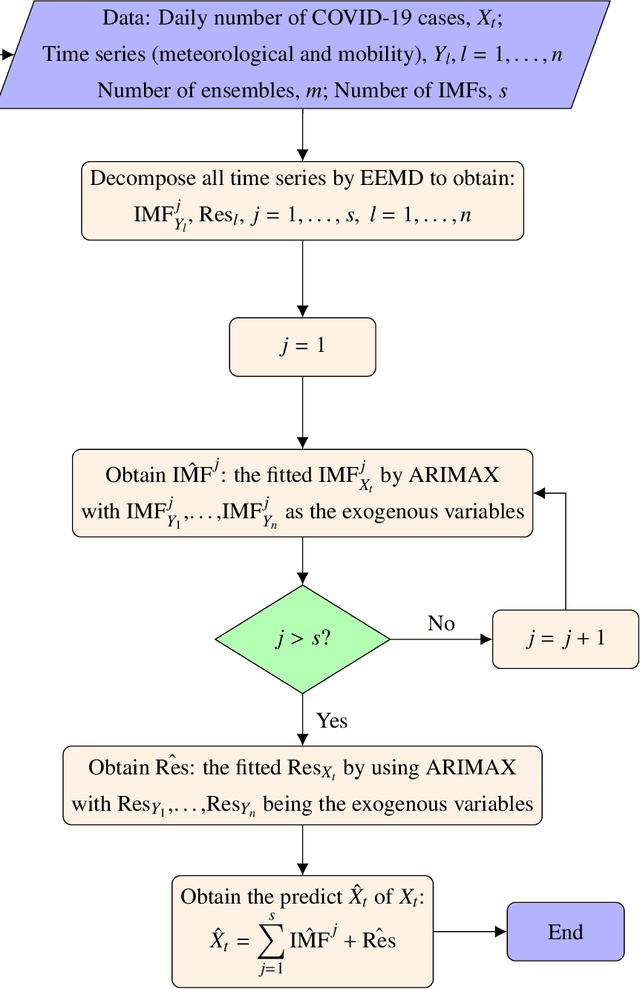
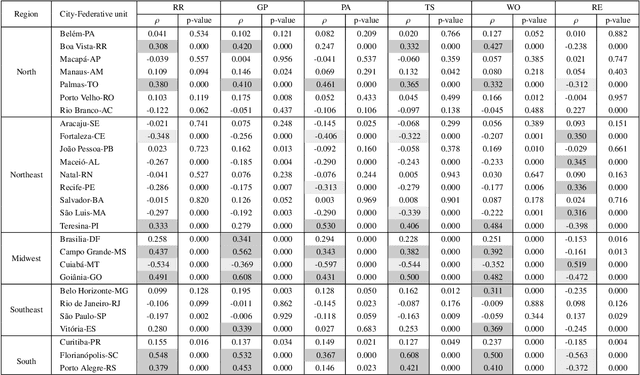
Abstract:In 2020, Brazil was the leading country in COVID-19 cases in Latin America, and capital cities were the most severely affected by the outbreak. Climates vary in Brazil due to the territorial extension of the country, its relief, geography, and other factors. Since the most common COVID-19 symptoms are related to the respiratory system, many researchers have studied the correlation between the number of COVID-19 cases with meteorological variables like temperature, humidity, rainfall, etc. Also, due to its high transmission rate, some researchers have analyzed the impact of human mobility on the dynamics of COVID-19 transmission. There is a dearth of literature that considers these two variables when predicting the spread of COVID-19 cases. In this paper, we analyzed the correlation between the number of COVID-19 cases and human mobility, and meteorological data in Brazilian capitals. We found that the correlation between such variables depends on the regions where the cities are located. We employed the variables with a significant correlation with COVID-19 cases to predict the number of COVID-19 infections in all Brazilian capitals and proposed a prediction method combining the Ensemble Empirical Mode Decomposition (EEMD) method with the Autoregressive Integrated Moving Average Exogenous inputs (ARIMAX) method, which we called EEMD-ARIMAX. After analyzing the results poor predictions were further investigated using a signal processing-based anomaly detection method. Computational tests showed that EEMD-ARIMAX achieved a forecast 26.73% better than ARIMAX. Moreover, an improvement of 30.69% in the average root mean squared error (RMSE) was noticed when applying the EEMD-ARIMAX method to the data normalized after the anomaly detection.
An efficient Lagrangian-based heuristic to solve a multi-objective sustainable supply chain problem
Jun 14, 2019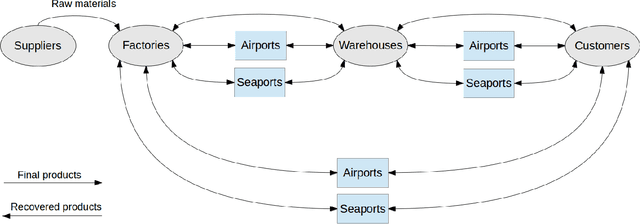
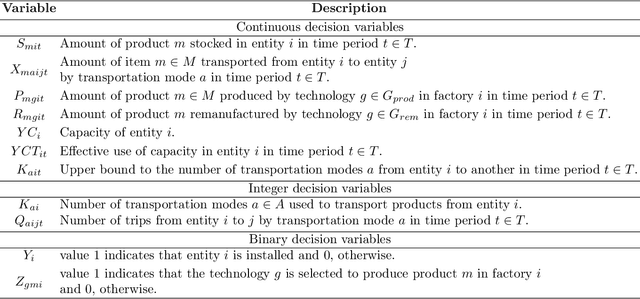

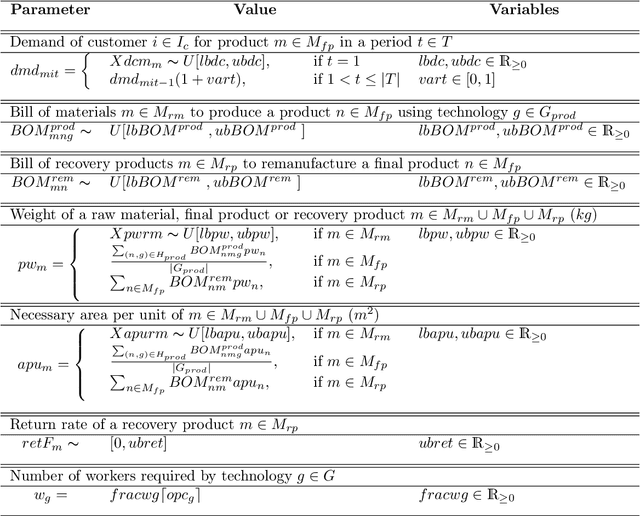
Abstract:Sustainable Supply Chain (SSC) management aims at integrating economic, environmental and social goals to assist in the long-term planning of a company and its supply chains. There is no consensus in the literature as to whether social and environmental responsibilities are profit-compatible. However, the conflicting nature of these goals is explicit when considering specific assessment measures and, in this scenario, multi-objective optimization is a way to represent problems that simultaneously optimize the goals. This paper proposes a Lagrangian matheuristic method, called $AugMathLagr$, to solve a hard and relevant multi-objective problem found in the literature. $AugMathLagr$ was extensively tested using artificial instances defined by a generator presented in this paper. The results show a competitive performance of $AugMathLagr$ when compared with an exact multi-objective method limited by time and a matheuristic recently proposed in the literature and adapted here to address the studied problem. In addition, computational results on a case study are presented and analyzed, and demonstrate the outstanding performance of $AugMathLagr$.
An ensemble based on a bi-objective evolutionary spectral algorithm for graph clustering
Oct 08, 2018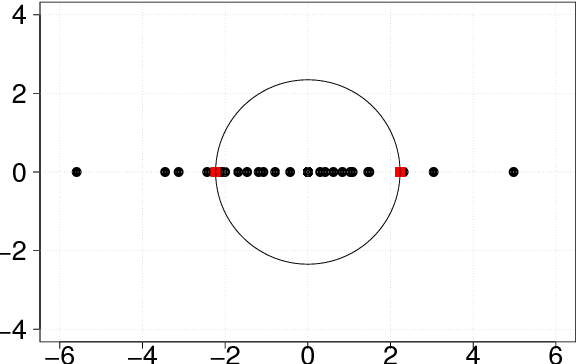
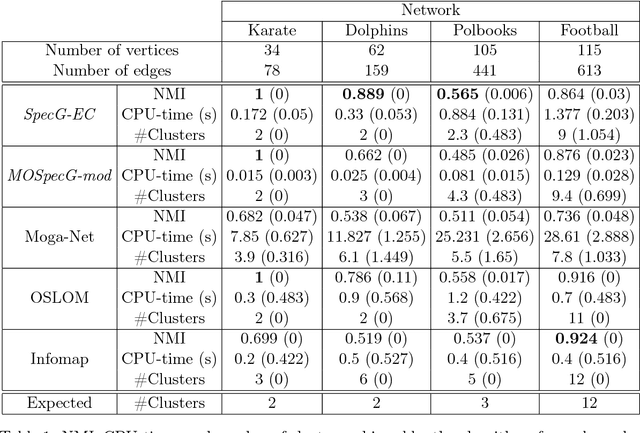
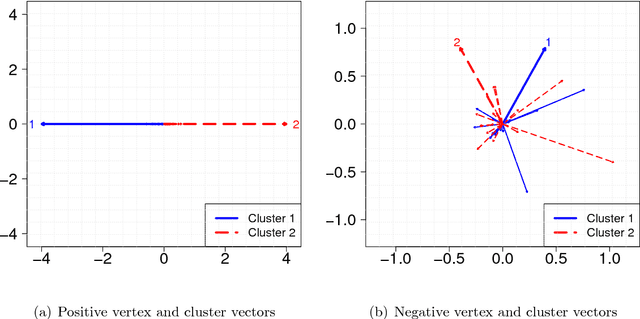
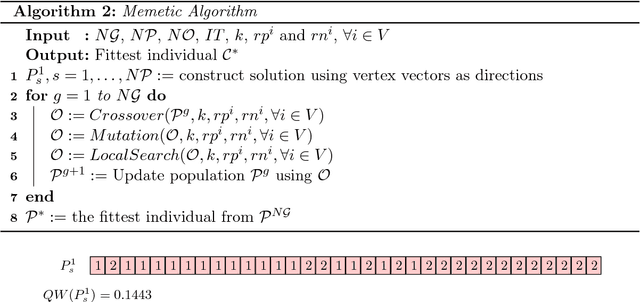
Abstract:Graph clustering is a challenging pattern recognition problem whose goal is to identify vertex partitions with high intra-group connectivity. Because of the rough definition of this problem, there are numerous effective ways to formally determine such partitions. In particular, multi-objective optimization can deal with the trade-offs between different clustering quality measures in order to better assess the partitions. This paper investigates a problem that maximizes the number of intra-cluster edges of a graph and minimizes the expected number of inter-cluster edges in a random graph with the same degree sequence as the original one. The difference between the two investigated objectives is the definition of the well-known measure of graph clustering quality: the modularity. We introduce a spectral decomposition hybridized with an evolutionary heuristic, called MOSpecG, to approach this bi-objective problem and an ensemble strategy to consolidate the solutions found by MOSpecG into a final robust partition. The results of computational experiments with real and artificial LFR networks demonstrated a significant improvement in the results and performance of the introduced method in regard to another bi-objective algorithm found in the literature
 Add to Chrome
Add to Chrome Add to Firefox
Add to Firefox Add to Edge
Add to Edge